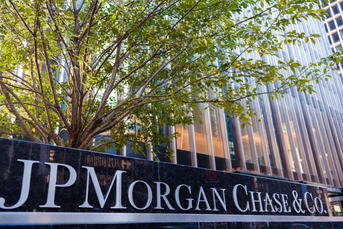Can investors still rely on strategists?

Many have been forced to admit they got forecasts wrong in 2023.
Stock-market strategists who were largely wrong about this year’s rally are finally starting to come to face their mistake, raising year-end targets for the S&P 500 Index.
Take Societe Generale’s Manish Kabra, who boosted his year-end target last week on the index to 4,750 from 4,300 — 25% above his original call of 3,800 heading into 2023. Or Piper Sandler & Co.’s Michael Kantrowitz and BNP Paribas SA’s Greg Boutle, who at 3,225 and 3,400 had held the lowest targets among sell-side forecasters. They were cornered into lifting their 2023 outlooks in recent months just to keep up with this year’s 15.9% rally.
And then there’s Morgan Stanley’s Mike Wilson, a stalwart bear, who conceded in July that he was pessimistic for too long. Though he still sees US stocks falling more than 10% before the year is out.
“Group think and psychology is a primary driver of strategists’ behavior,” Adam Sarhan, founder of 50 Park Investments, said. “So many strategists have been wrong for so long this year, so many have been forced to adjust their targets as they try to catch up with the stock market.”
While strategists have largely capitulated on their forecasts for 2023, they aren’t quite ready to turn into bulls. Kabra, for example, expects the S&P 500 to fall to 3,800 by the middle of next year, driven by a consumer-spending crunch. It closed Friday at 4,450.
He’s not alone. Strategists broadly forecast a market downturn in 2024, even as signs mount that the US economy may avoid a recession — the rate of inflation has cooled overall, retail sales remain strong, and the Federal Reserve is expected to hold interest rates steady this week.
For investors with money on the line, the gloom on Wall Street creates a dilemma. It’s a reminder that the Fed’s efforts to tame inflation still threaten the economy. At the same time, stocks overcame the same threats in 2023 and now, with Corporate America’s improving profit outlook and the Fed itself seeing no signs of a recession, some market watchers are concluding that the bears are going to be wrong again.
DIFFERENT PRESSURES
To Sarhan, an equities bull who favors technology and growth stocks, it all drives home how the stakes are different for those who monitor the market — like strategists — and those who manage client money.
“The pressure is extremely different as a money manager,” he said. “Not only do you have to be right, but you must beat the market as well — or clients will walk out on you.”
A slew of Wall Street strategists have been forced to ratchet up their forecasts as stocks extended their climb this year. Bank of America Corp.’s Savita Subramanian, Goldman Sachs Group Inc.’s David Kostin and Citigroup Inc.’s Scott Chronert also boosted their 2023 outlooks in recent months to keep up with the rally.
“You could argue that everyone who’s upping their estimates and adjusting their market calls isn’t necessarily wrong, they were just early,” said Oliver Pursche, senior vice president and adviser at Wealthspire Advisors. “Listening to someone you disagree with is much more valuable than simply seeking confirmation bias from someone else who views the market the same way you do.”
With the Fed nearing the end of its tightening cycle, Pursche is optimistic about the stock market and the economy as the earnings outlook brightens and spending remains robust.
RISKS REMAIN
But that’s not to say there aren’t risks.
Fed officials have signaled they are prepared to lift borrowing costs again if the economy and inflation don’t cool further. There’s also a tried-and-true signal emanating from the bond market, which has never sounded recession alarms for this long.
The main question vexing much of Wall Street at this point may be how long the Fed will keep rates this high, if it actually is done hiking. Economists surveyed by Bloomberg expect officials to keep rates in the 5.25% to 5.5% range at their Sept. 19-20 meeting, and the first cut to come in May – two months later than the economists’ view in July.
Historically, nailing the timing of when the Fed is done hiking has delivered double-digit returns for equities investors, but the trajectory gets murky when the central bank skips before resuming hikes.
There are signs that investors have money to put to work in stocks. While investors’ exposure in July looked stretched after the big first-half advance in equities, it is now considerably closer to neutral, data compiled by Deutsche Bank AG show.
It appears that some of that money may be coming off the sidelines. Equity funds just saw the biggest weekly inflow in 18 months on growing confidence the economy is headed for a soft landing, according to Bank of America.
“No one thought the rally would go this far this fast,” said Stephanie Lang, chief investment officer at Homrich Berg, who’s been underweight equities all year. “What will be telling is if most of the strategists turn, but then comes more of the economic weakness some are already worried about.”
Learn more about reprints and licensing for this article.








